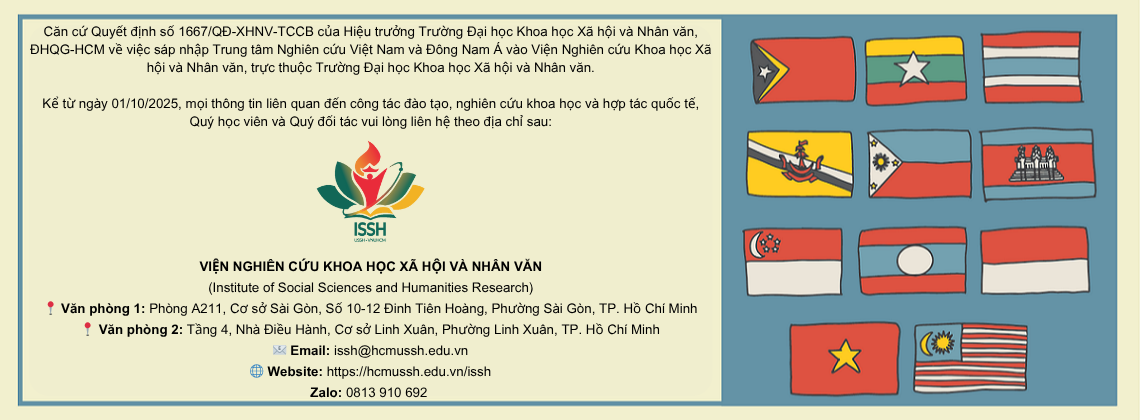FIELD RESEARCH IN HUE CITY
, 03/03/2025 10:03From 16 to 20 February 2025, the Center for Vietnam and Southeast Asian Studies conducted a field trip to Hue City. The research team included Dr. Tran Dinh Lam - Director of the International Cooperation and Training program; Ms. Symonekeo Sensathith Thomas - Doctoral student at Johns Hopkins University, US; and Mr. Nguyen Binh (MA) - lecturer from Hue University. Working with the delegation were the People's Committee of Quang Dien District and the People's Committees of Quang Loi and Quang Cong communes.
The main objective of this fieldwork is to collect data to support the research on “EVALUATION OF THE EFFECTIVENESS OF CLIMATE ADAPTATION ASSISTANCE TO VIETNAM BY THE GLOBAL FOREIGN AID AGENCIES: LESSONS LEARNED FROM THE MEKONG DELTA” The aim is to draw lessons from experiences in adapting food production systems and biodiversity in Vietnam to the impacts of climate change, which can be applied to the development of National Adaptation Plans (NAPs) in Vietnam and other developing countries with similar characteristics to Vietnam.
Findings from the fieldwork:
The GCF project has made significant contributions to the socio-economic development of the locality, as recognized by both the local community and government:
Funding Selection Criteria:
- Financial support was directed towards impoverished families whose homes are situated below a 1.5-meter flood level in vulnerable areas, including low-lying lands, lagoons, and coastal regions. This selection criterion aligns with Direction 48 from the Prime Minister’s office (Direction 48/2014/Q Đ -TTg, dated: 28/8/2014).
- Local councils facilitated discussions to identify eligible households, leading to a compiled list for verification at the district level.
- After the project was approved, government funding was directly transferred to the approved families, bypassing intermediaries to streamline access. Each family received financial assistance totaling around 80 million VND (approximately $1,700) for building flood-resistant homes. Between 2018 and 2021, the number of poor families significantly decreased, showcasing the project’s success in poverty alleviation.
- Families were tasked with hiring constructors, with payments made directly to builders to ensure compliance with city standards. The duration for house construction was 6 months from 2018 to 2020 and 3 months in 2024.
Implementation Results:
- Housing Component:731 storm and flood-resistant houses have been completed, providing safety to nearly 3,000 residents.
- Mangrove Component:22 hectares of new mangroves have been successfully planted, contributing positively to local socio-economic development and aligning with provincial objectives.
- Disaster Risk Management Component:Enhanced access to climate change data and training has benefited 9,121 officials and residents, including 3,889 women.
Administrative Actions and Support:
- The successful execution of the project has been supported by various governmental approvals, including budget allocations, operational plans, and contractor selections. Strong coordination among local authorities and agencies has also played a key role in ensuring that project activities are carried out in a timely manner. Additionally, effective collaboration with the Social Policy Bank to meet the loan requirements of participating households has been crucial. Support from organizations such as the Vietnam Fatherland Front Committee, the Women’s Union, the Red Cross Society, and businesses like Luks Vietnam has greatly benefited the families involved in the project.
Poverty Reduction Impact:
- Significant progress in poverty alleviation has been made from 2018 (when there were 167 poor families) to 2021 (only 6 families in the near-poor category). In 2024, there are now fewer poor families.
- Local government recognizes the success of these poverty reduction efforts, although some families continue to face debt challenges due to borrowing money to build their houses.
Challenges:
- Increasing material costs driven by inflation have created a need for more funding than the original 80 million VND allocated. Families often have to depend on their own savings, bank loans, or support from local organizations for additional financial help. At times, they seek assistance with labor from youth unions, women's unions, private cement companies, and international organizations like the Red Cross.
- Lack of sediment from rivers is hindering mangrove planting in the lagoon.
Community Satisfaction:
- The local community has a positive view of the project, especially as it reduces the need for emergency relocations during floods. Families who received funding from the GCF project for housing construction feel very safe from flooding and storm surges. However, those who have not received funding assistance remain hopeful for support from future projects.
- Future projects may prioritize "near-poor" households for additional support.
- Approximately 50% of households have built two-story homes for flood mitigation, while around 20% have constructed single-story homes for storm protection.
- A total of 751 houses have been constructed through the GCF-UNDP-GoVN initiative in Hue.
Conclusion:
- The project has successfully completed the construction of 731 storm- and flood-resistant houses and is making good progress with mangrove planting efforts in Hương Phong.
- Strong political support has been crucial in helping residents build safe homes while overcoming various challenges.
Recommendations:
- Suggestions include expanding the eligibility criteria to include near-poor families and adjusting funding levels based on current construction costs. There is also an emphasis on the continuation of housing support policies for vulnerable populations.
- The Project Management Board seeks guidance on project closure procedures and assistance with settlement processes from Central Authorities and UNDP.
- The Ministry of Construction is urged to continue supporting policies for flood-resistant housing for impoverished coastal households, with a proposal to build 792 new homes and renovate 421 existing homes.
- Allocate funding for planting over 300 hectares of mangroves in Hương Phong and other communes in Hue City.
- Funding should also be allocated for the care of mangrove forests in Hương Phong Commune, ensuring sustainability after the project concludes.
This report serves as a foundation for future initiatives, collaborations, and funding proposals to support Hue City in Vietnam from the government and international organizations. On the occasion of this fieldwork research, Dr. Tran Dinh Lam also donated books on “The Economic, Cultural, and Social Life of Bahnar People: Sustainable Development” to the local authorities.














